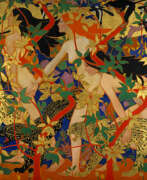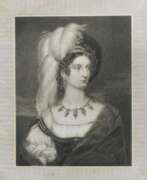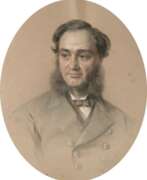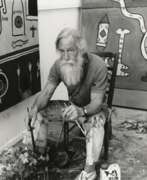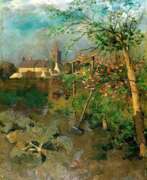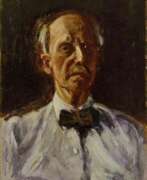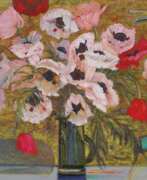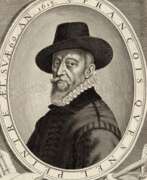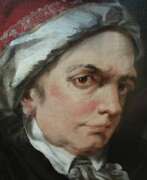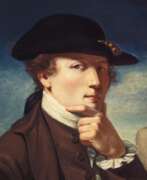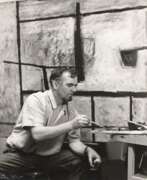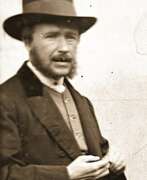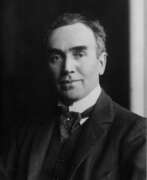Portrait Scotland
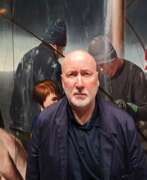

Ken Currie is a Scottish artist and a graduate of Glasgow School of Art (1978-1983). Ken grew up in industrial Glasgow. This has had a significant influence on his early works. In the 1980s Currie produced a series of works that romanticised Red Clydeside depicting heroic Dockworkers, Shop-stewards and urban areas along the River Clyde.


Edwin James Douglas was a British animal painter.
Edwin was the son of the famous portrait painter James Douglas, studied at the Royal Scottish Academy schools and exhibited his first works at the Royal Scottish Academy at the age of only 17. Edwin Douglas painted hunting scenes, dogs and horses, which attracted many famous patrons, including Sir Charles Tennant and Queen Victoria. She even purchased a painting of setters as a birthday present for King Edward VII.
Douglas was a very successful artist whose animal paintings, like those of his predecessor Landseer, resonated with Victorian collectors. He was best at dogs and horses, but he also painted portraits and genre pictures. Between 1869 and 1900 he exhibited at the Royal Academy, forty-one works in all, at the Royal Scottish Academy and other venues in London and the provinces. In addition to painting, Douglas had a passion for cattle breeding and was elected an honorary life member of the Jersey Cattle Society of England.


James Guthrie was a Scottish painter, prominent as part of the Glasgow Boys, and is celebrated for his portraiture and contributions to Scottish Realism. Born on June 10, 1859, in Greenock, Guthrie’s work reflected the influence of French realists, particularly Jules Bastien-Lepage, noted for rural subjects depicted with broad, square brush strokes.
His early artistic journey saw him forsake law studies at Glasgow University for painting, a self-taught endeavor that led him to become one of the leading lights of his artist collective. Guthrie's works are characterized by a unique blend of realism and the vibrant influence of French painting techniques, making his work distinctive in the Scottish art scene of the time.
For art collectors and enthusiasts, Guthrie's works like "Statesmen of World War I," held at the National Portrait Gallery in London, offer a glimpse into the evolution of Scottish painting. His portraiture not only captures the visage of his subjects but also the cultural fabric of his era. Those interested in the intersection of French influence and Scottish artistry would find his works a valuable addition to their collections.
To stay abreast of exhibitions and sales featuring James Guthrie's esteemed works, signing up for specialized updates can enrich your collection with pieces emblematic of Scottish Realism. Explore the depths of Guthrie's art and seize the opportunity to own a part of Scottish art history.
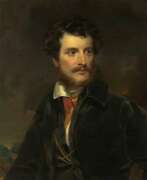

Kenneth Macleay was a Scottish and British portrait and miniature painter and one of the founders of the Royal Scottish Academy.
Kenneth Macleay made his reputation painting portraits in watercolor in sizes ranging from ivory miniatures to full-length images. After painting portraits of Queen Victoria's three youngest sons in the early 1860s, Kenneth Macleay was commissioned to create several more portraits of the Queen's favorite cronies, as well as miniature and watercolor portraits.
This was followed by a larger commission, which became the most important of the artist's career: a series of portraits of the most important Highland clansmen for publication. The first group of portraits were executed in the second half of the 1860s and exhibited by John Mitchell in Old Bond Street in 1869. They were then reproduced in chromolithography by the leading London lithographer Vincent Brooks (1814-1885) as illustrations for the two-volume The Highlanders of Scotland.


Robert Ronald McIan was a Scottish painter, illustrator and actor.
Alongside his acting work, McIan began painting landscapes and portraits. But he is best known for his illustrations for The Clans of the Scottish Highlands, published in 1845 to mark the centenary of the Jacobite rebellion, with texts by James Logan (1797-1872). The book, filled with colorful romanticized depictions of the Highlanders, their battles, and their lives, proved so popular that it was republished after his death. The book was dedicated to Queen Victoria, who revived interest in the Highland Scots.
In 1852, McIan was elected a Fellow of the Royal Scottish Academy.


Alfred Jacob Miller was an American artist best known for his paintings of trappers and Native Americans in the fur trade of the western United States. He also painted numerous portraits and genre paintings in and around Baltimore during the mid-nineteenth century.
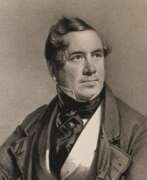

David Roberts was a Scottish painter and a member of the Royal Academy.
Since 1819, David Roberts worked as a scenographer in various theaters, where his creative potential was appreciated. Inspired by the positive feedback, some time later he seriously engaged in painting. After the first exhibition of works, held in 1824, the artist went on a trip. He visited several countries in Europe, where he created many drawings. In 1833, David Roberts continued to explore the world: he went to Spain, where he spent almost a year, also had time to visit Morocco, lived in Cairo for a long time and made sketches everywhere. Subsequently, his works were published in various magazines, and the author gained fame as a talented illustrator. In 1841, the artist became a member of the Royal Academy.
In the 1840s, an album with his works was published, thanks to these publications, David Roberts became the most famous painter of the Victorian era. The artist also skillfully depicted monuments of architecture. David Roberts' paintings are striking in their photographic accuracy, and he is still considered one of the best architectural painters in his homeland.


William Strang was a British artist, and renowned for his expertise in painting, etching, and draughtsmanship. Strang's early life in Dumbarton, where his family was involved in shipbuilding, influenced his choice to pursue art. He moved to London to study at the Slade School of Art under the guidance of Alphonse Legros, who profoundly influenced his artistic approach.
William Strang's work initially gained recognition in the realm of etching. His etchings covered a wide range of subjects, from landscapes and pastoral themes to macabre genre scenes, and he was particularly noted for his portraits of leading artistic and literary figures, including Robert Louis Stevenson and Thomas Hardy. Strang's notable works include "Death of the Ploughman’s Wife" (1888), "The Temptation" (1899), and "Lady with a Red Hat" (1918), which is a portrait of writer Vita Sackville-West, housed at the Kelvingrove Art Gallery, Glasgow.
In addition to his prints and paintings, William Strang was also a celebrated illustrator of literary works, notably illustrating books by authors such as Coleridge and Kipling. His involvement in the revival of the hand-printed book is also significant, as he produced many narrative illustrations for books and periodicals.
William Strang's contribution to British art was recognized by his membership in the Art Workers' Guild, where he served as Master, and his presidency in the International Society of Sculptors, Painters and Gravers. His election as an Engraver Member of the Royal Academy in 1921 marked the pinnacle of his career.
Art collectors and experts will appreciate Strang's work for its diversity, technical skill, and narrative depth. His legacy in British art and illustration remains influential, with his works held in prominent galleries and museums. To explore and stay updated on the life and works of William Strang, sign up for updates on related product sales and auction events.


David Wilkie was a Scottish painter, especially known for his genre scenes. He painted successfully in a wide variety of genres, including historical scenes, portraits, including formal royal ones, and scenes from his travels to Europe and the Middle East. His main base was in London, but he died and was buried at sea, off Gibraltar, returning from his first trip to the Middle East. He was sometimes known as the "people's painter".
He was Principal Painter in Ordinary to King William IV and Queen Victoria. Apart from royal portraits, his best-known painting today is probably The Chelsea Pensioners reading the Waterloo Dispatch of 1822 in Apsley House.
